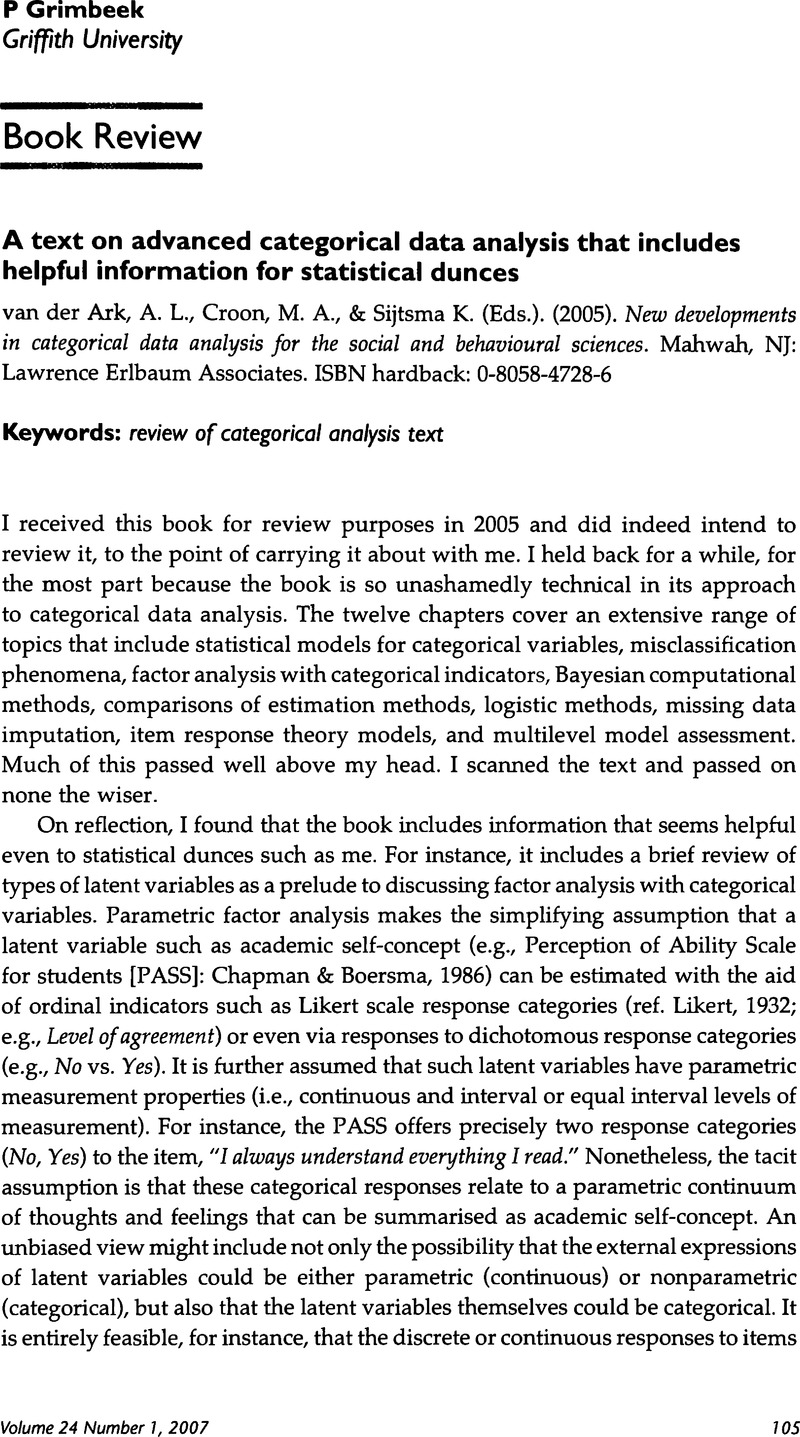No CrossRef data available.
Article contents
A text on advanced categorical data analysis that includes helpful information for statistical dunces - A. L. van der Ark, M. A. Croon, & K. Sijtsma (Eds.). (2005). New developments in categorical data analysis for the social and behavioural sciences. Mahwah, NJ: Lawrence Erlbaum Associates. ISBN hardback: 0-8058-4728-6
Review products
A. L. van der Ark, M. A. Croon, & K. Sijtsma (Eds.). (2005). New developments in categorical data analysis for the social and behavioural sciences. Mahwah, NJ: Lawrence Erlbaum Associates. ISBN hardback: 0-8058-4728-6
Published online by Cambridge University Press: 29 October 2015
Abstract
An abstract is not available for this content so a preview has been provided. As you have access to this content, a full PDF is available via the ‘Save PDF’ action button.

Keywords
- Type
- Book Review
- Information
- Copyright
- Copyright © Australian Psychological Society 2007
References
Bond, T.G., & Fox, C.M. (2001). Applying the Rasch model: Fundamental measurement in the human sciences. Mahwah, NJ: Lawrence Erlbaum Associates.CrossRefGoogle Scholar
Chapman, J.W., & Boersma, F.J (1986) Student’s Perception of Ability Scale: Comparison of scores for gifted, average, and learning disabled students. Perceptual and Motor Skills, 63, 57–58.CrossRefGoogle ScholarPubMed
Funnell, B., Bryer, F., Grimbeek, P., & Davies, M. (2004). Demographic profiling for educational researchers: Using SPSS optimal scaling to identify distinct groups of participants. In Bartlett, B.Bryer, F. & Roebuck, D. (Eds.), Educating: Weaving research into practice (Vol. 2, pp. 94–103). Brisbane, Australia: Griffith University, School of Cognition, Language, and Special Education.Google Scholar
Grimbeek, P. (1999). Reasons for reconsidering quantitative research based on the use of Likert scale & other social science data sets [Review of the book, Measurement in psychology: Critical history of a methodological concept]. Australian Educational & Developmental Psychologist, 16, 89–90.CrossRefGoogle Scholar
Grimbeek, P. (2001). Thirteen good reasons for applying the Rasch model to human data [Review of the book, Applying the Rasch model: Fundamental measurement in the human sciences]. Australian Educational & Developmental Psychologist, 18, 81–84.CrossRefGoogle Scholar
Koch, R. (1998). The 80/20 principle: The secret to success by achieving more with less. New York: Wiley.Google Scholar
Lee, C. (1998). Alternatives to cognition: A new look at explaining human social behavior. London: Lawrence Erlbaum Associates.Google Scholar
Likert, R. (1932). A technique for the measurement of attitudes. Archives of Psychology, 140, 1–54.Google Scholar
Michell, J. (1999). Measurement in psychology: Critical history of a methodological concept. New York: Cambridge University Press.CrossRefGoogle Scholar


